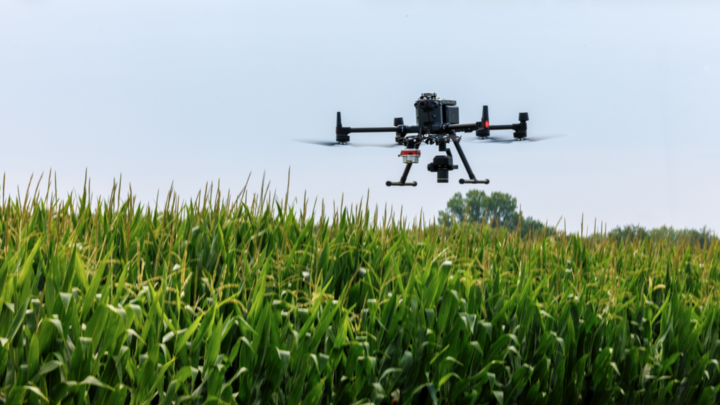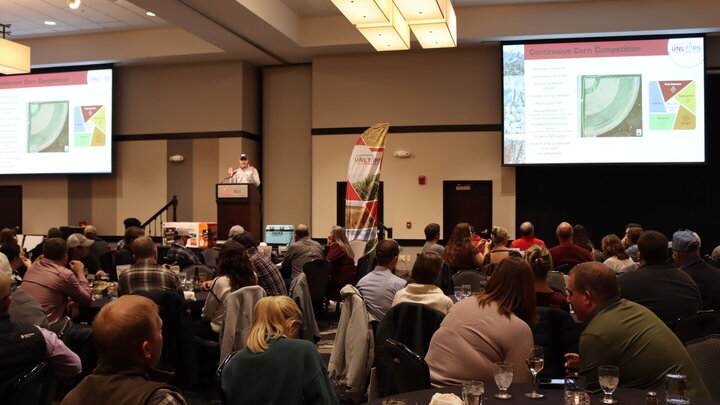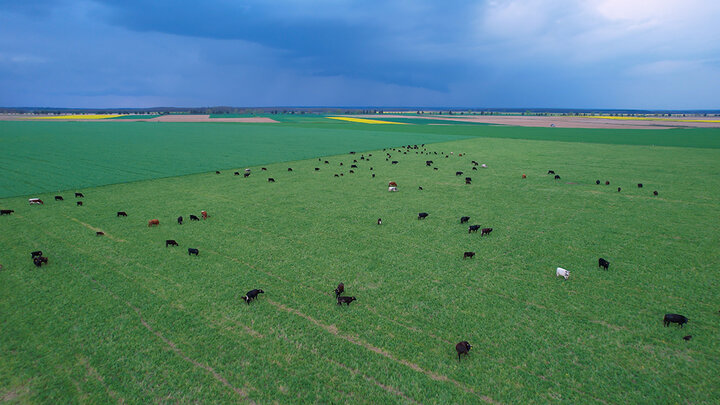Bioenergy Crops
Sweet Sorghum

Sweet sorghum is a relative to other common sorghums grown in Nebraska grain sorghum and forage sorghum. Yet instead of harvested for grain or its forage, sweet sorghum is harvested for its sugar content in the stems. The sugar can be directly fermented in ethanol like sugar cane ethanol. This direct squeeze to fermentation provides a benefit in cost as no cook process or costly enzymes needed like in corn ethanol production.
"Sweet Harvest" article, originally appeared in Ethanol Producer Magazine July 2008 (pdf)
Other Sweet Sorghum Resources
Canola
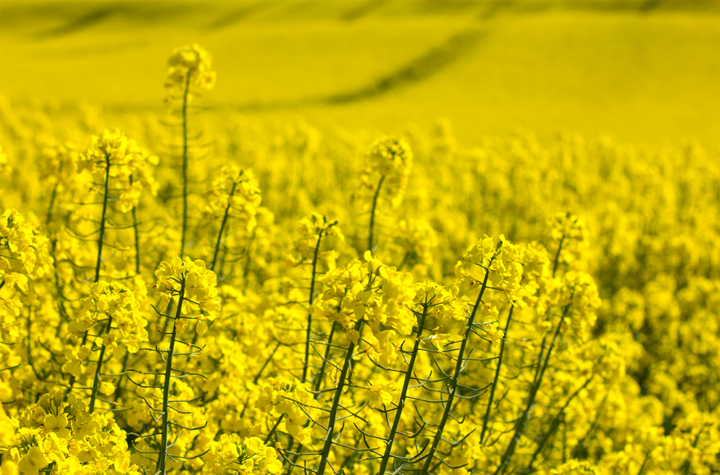
Canola seed has high oil content and produces high quality oil which can be used in food and biodiesel markets.
Canola's high quality oil and high percentage oil approximately 40% in the seed makes it a
very desirable biodiesel feedstock. Produced throughout Europe and Canada canola can be grown in western Nebraska.
Growing Crops for Better Biodiesel
by Loren Isom and Bill Booker
Loren is with the Industrial Ag Products Center at UNL
Read this article
Phenology of Oilseed Crops for Bio-Diesel in the High Plains
by Alexander D. Pavlista and David D. Baltensperger
Read this article
Other Canola Resources
Canola Production - North Dakota State University
Camelina

In the United States, camelina is primarily grown as a biofuel crop. The seed contains 30–40% oil. Camelina oil is used to produce biodiesel, and the meal co-product can be used as a livestock feed. Camelina oil also has use as a biolubricant and in industrial and cosmetic products.
The oil has a unique composition that may give it even higher value as a food crop. The oil is high in omega-3 fatty acid (alpha-linolenic acid) and also contains antioxidants (tocopherol, vitamin E) that give it a longer shelflife than flaxseed oil. Camelina oil contains 35–40% alpha-linolenic acid, compared to 50–60% for flaxseed oil. It may be used as cooking oil or as an additive to increase the nutritional value of bakery products or other foods. (Camelina Production - SDSU).
Hybrid Poplar

Hybrid Poplar is a woody tree grown for it biomass. Planted using small cuttings. It is usually grown for one year then cut to stimulate multiple stems then harvested after three or more additional years of growth. Midwestern yields have been in the 15 tons per acre range after three years growth.
Other Hybrid Poplar Resources
Miscanthus
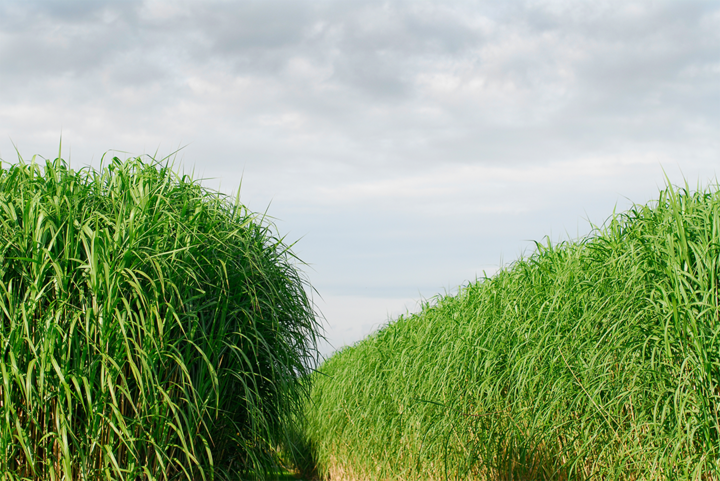
Miscanthus giganteus is native of Asia and is a natural hybrid. Grown from rhizomes, it does not produce viable seed. First introduced to Europe as a bioenergy crop, it has become a crop of high interest for its biomass yield potential in the U.S. Test yield between 10 and 20 tons per acre are common.
Other Miscanthus Resources
Miscanthus Production - Iowa State University
Sunflower
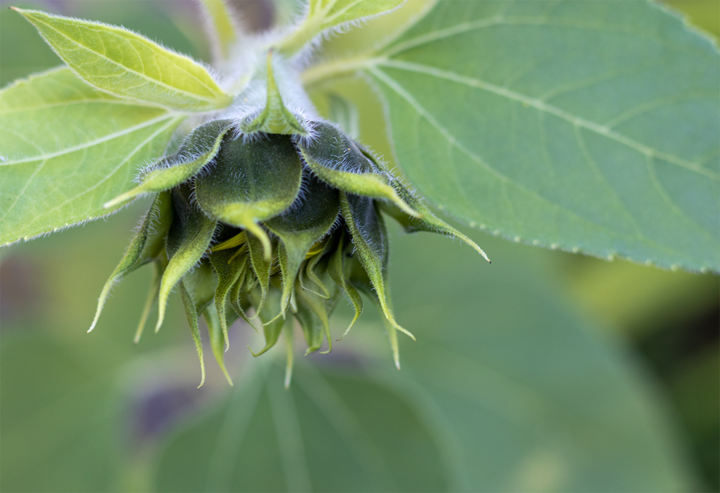
Sunflower production is relatively well established as an oilseed crop in the broader region of the Great Plains. For most Nebraska producers, the distance for delivery has limited production. Current plans for additional oilseed processing facilities in Nebraska could greatly reduce transportation costs for a large production area in Nebraska. The state of Nebraska only harvested 31,000 acres of oil type sunflowers in 2006 with an average yield of 1,200 pounds. Sunflowers have a typical oil content of 40%, but it will vary based on production conditions. Typical dryland yields will range from 800 to 1,500 pounds per acre, while irrigated yields are often targeted above 3,000 pounds per acre. The national average yield for oil type sunflowers is 1,267 pounds per acre. At 40% oil content, that is approximately 507 pounds of oil per acre available in the seeds. This is reduced to 431 pounds of extractable oil per acre with mechanical extraction. By Bill Booker, extension educator, Box Butte County, Nebraska.
Nebraska Crop Budgets
Track revenue and costs for various cropping systems with the Nebraska Crop Budgets and Energy Conversion Worksheets.
Other Sunflower Resources
Corn

Nebraska produced 1.81 billion bushels of corn in 2019. Approximately 790 million bushels goes to ethanol production.
Corn Grain as an Ethanol Feedstock
Introduction
Corn (Zea Mays) is a popular feedstock for ethanol production in the United States due to its abundance and relative ease of conversion to ethyl alcohol (ethanol). Corn and other high starch grains have been converted into ethanol for thousands of years, yet only in the past century has its use as fuel greatly expanded. Conversion includes grinding, cooking with enzymes to break starches into indivual sugar molecules, fermentation with yeast, distillation to remove water. For fuel ethanol two more steps are included; molecular sieve to remove the last of the water and denaturing to make the ethanol undrinkable and thus not taxed as drinkable alcohol.
Current Potential for Use as a Biofuel
Corn grain makes a good biofuel feedstock due to its starch content and relative easy conversion to ethanol. Infrastructure to plant, harvest and store corn in mass quantities benefits the corn ethanol industry. Unlike sugarcane where squeezed sugar water can be directly fermented, corn starch must be cooked with alpha and gluco-amylase enzymes to break the starch to simple sugars. Cellulosic feedstocks are more recalcitrant and require more time different steps break cellulose into its simple sugars.
The renewable fuel standards set by congress in 2005 and 2007 set blending requirements for blending biofuels with petroleum fuels. Demand for ethanol increased due to these blending requirements as well as demand for oxygenates and Octane boosters (Ethanol is an oxygenate as well as boosts Octane rating when blended with gasoline). Ethanol production capacity is 15.36 billion gallons in 2022 up from 10.6 billion gallons per year in 2009 (eia.gov).
Corn production in the U.S. reached record highs in 2021 with 15.1 billion bushels (National Ag Statistics Service). Using a corn to ethanol conversion of 2.8 gallons of ethanol from a bushel of corn total U.S. production of corn could produce approximately 42.2 billion gallons of ethanol. Compare this the US gasoline consumption in 2022 of 135 billion gallon per year (Energy Information Administration). Yet, using all of our corn for ethanol is not realistic and has not been proposed. Creating the 15.36 billion gallons under the RFS-2 would require 5.48 billion bushels or about 36% of our 2022 corn crop. Approximately one third of corn entering an ethanol biorefinery will leave as distillers grains which can be used to replace corn in cattle, swine, and poultry diets. This replacement of corn with distillers grains should be considered. When distillers are accounted for ethanol is made from 24% of our 2022 corn crop. Corn ethanol blending has shown some small increases due to expanding sales of 15% percent blends as compared to common 10% blends.
Biology and Adaptation
Corn (Zea Mays) originated in Central America with first domestication purported to be in the Tehuacan Valley of Mexico. Spreading throughout the North American continent corn became an important crop for early Americans. At its peak in 1917, 111 million acres of corn were planted in the U.S. Today corn is planted in many parts of the world and across many states in the U.S. from Southern North Dakota to Texas and East to New York. Corn is well adapted to growing in temperatures between 50 and 86 degrees Fahrenheit (Hoeft et. al. 2000). To produce grain, corn will use approximately 22 inches of water which requires 12 to 20 inches of rainfall or irrigation during the growing season. Many parts of the upper Midwest are well suited to grow corn and this area is sometimes referred to as the corn-belt.
Production and Agronomic Information
Corn in the upper Midwest is seeded between March and May and harvested between September and November in most years. A majority of corn planted today has genetic resistance to herbicides and some insects these traits aids producers in control of weeds and insects. In seed resistance genetics are a result of genetic engineering and plant breeding. Much of the corn-belt rotates corn production with soybeans or wheat. These rotations help break weed and insect cycles and reduce the cost of production. Corn responds best to highly fertile soils with supplemental fertilizer applied in most years. Fertilizer may be inorganic chemical fertilizer or manure. Major nutrients required by corn are nitrogen, phosphorus, and potassium. Inorganic nitrogen fertilizer production is very energy intensive and as a result nitrogen fertilizer represents nearly 30% of the energy inputs in corn production (BESS 2009). Other major inputs include irrigation and grain drying. Smaller but still significant energy input to corn production are diesel fuel for tractors, transportation, harvest, and pest management chemicals and application.
Potential Yields
Average corn yield nationally was 173 bushels per acre in 2022. Corn yield has increased by approximately 2 bushels per acre per year since 1940 (NASS 2009). This increase will likely continue into the future with some people predicting the yield trend to increase at a greater rate due to biotechnology and advances in breeding. Ethanol yield per acre would be 484 gallons per acre from 173 bushels of corn. An acre of sugar cane can produce approximate 35 ton yield or about 560 gallons of ethanol (Hofstrand, 2009).
Production Challenges
Corn production is blessed with over 100 years of infrastructure build-up and research. Producers have great knowledge and experience growing corn. This infrastructure and grower knowledge makes corn a natural crop for expanded uses such as ethanol. Yet, high production costs and high inputs make corn a very intensive crop. Other bioenergy crops may be less intensive requiring fewer inputs. The costs versus profit per acre need to be compared as economics are a major driver in decision as to which crop is best. Growing another crop on an acre where corn could be grown has risk known as opportunity costs. Risks may include; a new cropping system, no harvest, transport, or storage infrastructure and also no commodity market to fall back upon if the biofuel market fails.
Estimated Production Costs
Production costs vary widely depending on tillage, irrigation, yield goal (soil fertility), spraying schedule or seed selection, and rotation. An example corn budget with rainfed, no-till, biotech seed, corn soybean rotation, and 180 bushel yield goal would include: Spray, Spray, Plant, Spray, Spray, Harvest, Cart, Truck, and Dry Grain as operations for a total cost of $525 per acre if overhead (crop insurance, land, taxes, etc…) is included the total is $901 per acre. Production costs increase to over $1,100 on irrigated fields with continuous corn (Klein and McClure, 2023).
Environmental and Sustainability Issues
Life cycle analysis (LCA) of ethanol production from corn grain has yielded a net energy ratio of 1.2 to 1.45 (Liska et. al. 2009). This represents just a 20 to 45% positive energy balance when producing ethanol from corn. This number has been the criticism of corn ethanol because of the large amount of fossil energy used to produce ethanol. A USDA Study published in 2016 reports increased efficiency at ethanol facilities have led to fossil energy ratios nationally at 2.0 to 1 and with some individual facilities with ratios as high as 4.0 to 1. (2015 Energy Balance For The Corn Ethanol Industry) It is important to understand that many researchers have studied the LCA and energy balance numbers and in recent years have become interested in values beyond energy balance tending more for LCA emissions compared to gasoline. Each researcher has to establish the boundaries of their LCA, then define and defend their calculations. Because of disagreements in what to include and how to calculate things like boundaries, researchers have come to different conclusions. Readers of the research should read and understand each researchers reasons and defense of their LCA. These LCA models are quite complex and as scientists we need to be open to the ideas of other researchers while forming and defending our own reasons for which study(s) we think are most correct.
Corn production is highly intensive row crop production including use of large amounts of fertilizer and pesticides. Over many years some water bodies have become contaminated with soil, nutrient, and pesticide runoff from agricultural fields. The increase in no-till and reduced tillage practices has reduced soil erosion and subsequently nutrient and pesticide runoff and the trend for better conservation on these acres continues. Today’s corn producers are producing more grain on less acres using better conservation techniques than the previous generations. A recognition of improvement is warrented while also noting water and air pollution still occur due to farming and improvements need to continue.
References
Biofuel Energy Systems Simulator (BESS), 2008, ver.2008.3.1, A Model for Life-Cycle Energy & Emissions Analysis of Corn-Ethanol Biofuel Production Systems, University of Nebraska-Lincoln
Bromberg L. and Cohn D.R., 2008, Effective Octane and Efficiency Advantages of Direct Injection Alcohol Engines, MIT Laboratory for Energy and Environment Report, LFEE 2008-01 RP
Environmental Protection Agency, http://www.EPA.gov
Hoeft R.G., Nafziger E.D., Johnson R.R., 2000, Aldrich S.R. Modern Corn and Soybean Production, MCSP Publications Champaign IL
Hofstrand D., 2009, Brazil’s Ethanol Industry, Ag Decision Maker, Iowa State University, http://www.extension.iastate.edu/agdm
Klein R.N., and McClure, Crop Budgets Nebraska 2023, University of Nebraska – Lincoln Extension, EC 872,
Liska A.J., Yang H.S., Bremer V.R., Klopfenstein T.J., Walters D.T., Erickson G.E., Cassman K.G., 2009, Improvements in Life Cycle Energy Efficiency and Greenhouse Gas Emissions of Corn-Ethanol, Journal of Industrial Ecology, 13, 58-74
National Agriculture Statistics Service (NASS), http://www.nass.usda.gov
Renewable Fuel Association, http://www.ethanolrfa.org
Smith J.L. and Workman J.P., 2004, Alcohol for Motor Fuels, Farm and Ranch Series Equipment no. 5.010,
Other Resources
Nebraska Department of Environment and Energy - look for updated maps of ethanol plants in Nebraska on the statistics page
Nebraska Corn Growers Association
National Ag Statistics Service - Nebraska Statistics
Environmental Protection Agency - Renewable Fuel Standard Program
Soybean

Soybean oil is a major feedstock for biodiesel production. Soybeans contain approximately 18% oil.
Soybean as a Biofuel Feedstock
Soybean (Glycine max) is a major crop throughout much of North America, South America and Asia. The United States is the world’s greatest producer, producing approximately 32% of the worlds soybeans followed by Brazil with 28%. Origins of soybean are in Southeast Asia with first domestication reported in the 11th century BC in China. First planted in the U.S. in 1765, soybeans spread to the Corn Belt by the mid 1800s with major acreage not seen until the 1920s when it was used mainly as a forage crop. Major U.S. expansion as an oilseed crop began in the 1940s (Gibson and Benson 2005). Soybeans contain approximately 18 to 20% oil compared to other oilseed crops such as canola (40%) and sunflower (43%)(Berglund et. al. 2007)(National Sunflower Association 2009). At 48 lbs per bushel soybean meal remains a major product from soybeans used for animal feed and human food. Soybean acreage is much greater than other oilseed crops leading to substantial soybean oil production and its availability as a biofuel feedstock.
Current Potential for Use as a Biofuel
Soybean oil is currently a major feedstock for production of biodiesel (NBB). The most common method of biodiesel production is a reaction of vegetable oils or animal fats with methanol or ethanol in the presence of sodium hydroxide (which acts as a catalyst). The transesterification reaction yields methyl or ethyl esters (biodiesel) and a byproduct of glycerin. Note biodiesel is not straight vegetable oil burned in a diesel engine. Numerous studies between 1980 and 2000 have shown the use of straight vegetable oil including soybean oil to cause carbon deposits and shorten engine life (Jones and Peterson 2002). Biodiesel use in diesel engines does not have similar negative effects. Use of soybean oil for biodiesel was greatly influenced by promotion from U.S. soybean farmers through the United Soybean Board (USB) and subsequent creation of the National Biodiesel Board (NBB).
Biology and Adaptation
Soybean (Glycine max) is a cool season legume which can be grown from south to north throughout much of the eastern half of the U.S. Soybeans and other legumes have a unique relationship with a bacteria bradyrhizobium species, will colonize on soybean roots forming a nodule. The two species form a symbiotic relationship where the soybean plant provides nutrition and the bacteria fixes nitrogen from the air. This relationship reduces the need for supplemental nitrogen fertilizer in soybean production.
Soybeans flower in response to day length and temperature. Varieties grown in the United States are divided into 13 maturity groups from maturity group 000 being the earliest and adapted to northern regions of Minnesota and southern Canada, to maturity group X adapted to southern regions such as south Texas. The earlier varieties bloom when days are long and nights are short, while the later-maturing varieties bloom under relatively shorter days and longer nights. Summer days are longer at northern latitudes, where early maturing varieties will initiate flowering when days are longer. maturity groups develop differently and knowing the growth habit of different maturity groups can help with the crop management (Waitrak et. al. 2010).
Production and Agronomic Information
Through much of the upper Midwest soybeans are planted in April to June and harvested in September to November. Soybeans are well adapted to grow in soils similar to corn production. In many cases soybeans are grown in rotation with corn or wheat to break insect, weed, and disease cycles. Nutrient requirements are generally less for soybeans than other crops with major nutrient requirements nitrogen, phosphorous, and potassium and where much of the nitrogen is gained through a relationship with bacteria. A soil pH in the range of 5.5 to 7.0 will enhance nutrient availability and soybean growth (Ferguson et. al. 2006). Weed control is necessary to achieve optimal yields and use of biotech seeds has eased the ability to control weeds during the growing season. Currently in the U.S. over 90% of soybeans planted are herbicide resistant (USDA ERS, 2009). Many insects and diseases are common in soybeans grown in the upper Midwest. The most damaging pest to soybeans is soybean cyst nematode, a soil born parasitic roundworm feeding on soybean roots (Chen et. al. 2001). Insect pests include: bean leaf beetle, soybean aphid, green clover worm, and spider mites. Soybean harvest begins after 95% leaf senescence when beans are 12 to 18% moisture.
Potential Biofuel Yields
Current U.S. production of soybeans in 2009 was 3.4 billion bushels from 77.4 million acres. Average yield per acre for the U.S. was 44 bushels per acre (National Ag Statistics Service). One bushel of soybeans can yield 1.5 gallons of biodiesel (NBB). Using all U.S. soybeans for biodiesel could produce 5.1 billion gallons biofuel. Using all soybean production for biodiesel has not been proposed and is not realistic. In 2009 biodiesel production was 700 million gallons with a production capacity of 1.83 billion gallons (Biodiesel Magazine, 2008). Based on a yield of 44 bushels per acre, an acre of soybeans could yield 66 gallons of biodiesel compared to 69 gallons for a 1300 lb per acre canola yield, 84 gallons for sunflower and over 600 gallons for palm oil (Hill et. al. 2006 and SDSU 2008).
Production Challenges
Soybean production generally compliments corn production in the upper Midwest. Both corn and soybeans enjoy a long history of production on millions of acres in the upper Midwest. This history has led to a large infrastructure of equipment, storage, rail, barge and truck transportation. Soybeans like many crops face insect and disease pests along with weather related challenges. An emerging disease has gained much attention in recent years. Soybean rust, a fungal disease native to Asia has spread to the soybean fields of South America and finally to U.S. soybeans. Rust control is expensive requiring fungicide applications and yield damage can be extreme.
Estimated Production Costs
Production costs will vary depending on location, cropping systems, and fluctuation in price of energy. Major expenditures in soybean production include; Planting, harvesting, seed and pesticides. An example of a Nebraska rainfed budget for no-till soybeans for 2010 lists $115 per acre for field operations, materials and services. When including overhead costs for land, insurance, etc. the total is approximately $200 per acre. Total costs for irrigated soybeans are around $400 per acre (Klein and Wilson 2010). Biodiesel profitability is extremely variable and based on the continuously changing prices biodiesel, soybean oil, co-product glycerin, methanol and natural gas. Price of soybean oil feedstock is one of the driving factors in profitability (Hofstrand and Johanns 2010).
Environmental and Sustainability Issues
Soybeans use for biodiesel production capacity grew from zero to over a billion gallons per year in the past two decades 90s and 00s. Through that time biodiesel production rose and fell depending on the price of feedstock, price of petroleum oil, and federal and state subsidies provided to the industry. One major challenge for soybeans are competing uses for soybean oil. Soybean oil is used for many human food products, cooking oil and numerous industrial applications. Soybeans account for 80 percent or more of the edible fats and oils consumed in the U.S. (Gibson and Benson 2005). Competition with other uses has caused price spikes in the soybean oil market challenging the profitability of soybean biodiesel (Wisner 2009). A life cycle analysis of biodiesel done by the USDA reports the fossil energy ratio of biodiesel to be 3.2 units of energy out for each unit of fossil energy used. In other words, biodiesel yields 3.2 units of energy for every unit of fossil energy consumed compared to petroleum diesel which has a fossil energy ratio of ~0.84.
By F. John Hay, Extension Educator, University of Nebraska-Lincoln Extension
Reviewed by Dr. Charles Shapiro University of Nebraska-Lincoln Extension Specialist Soil Science and Crop Nutrition
References
Biodiesel Magazine, (2008), 2009 Biodiesel Industry Directory, Fifth Edition December 2008, BBI International, Grand Forks, ND
Berglund D.R., McKay K., Knodel J., (2007), Canola Production, North Dakota State University, A-686 revised August 2007
Chen S., MacDonald D.H., Kurle J.E. Reynolds D.A., 2001, The Soybean Cyst Nematode, University of Minnesota Extension, FO-03935, http://www.soybeans.umn.edu
Energy Information Administration
Environmental Protection Agency
Ferguson R.B., Shapiro C.A., Dobermann A.R., Wortmann C.S., (2006), Fertilizer Recommendations for Soybeans, University of Nebraska-Lincoln Extension, G859
Gibson L. and Benson G., (2005), Origin, History, and Uses of Soybeans (Glycine max), Iowa State University, Department of Agronomy
Hill A., Kurki A., Morris M., (2006), Biodiesel: The Sustainability Dimensions, ATTRA Publication. Butte, MT: National Center for Appropriate Technology. Pages 4-5.
Hoeft R.G., Nafziger E.D., Johnson R.R., (2000), Aldrich S.R. Modern Corn and Soybean Production, MCSP Publications Champaign IL
Hofstrand D., Johanns A., (2010) Ag Marketing Resource Center, Biodiesel Profitability, Iowa State University Extension
Jones S., Peterson C.L., (2002) Using Unmodified Vegetable Oils as a Diesel Fuel Extender- A Literature Review. Department of Biological and Agricultural Engineering, University of Idaho, Moscow
Klein R.N., and Wilson R.K., (2010), Crop Budgets Nebraska 2010, University of Nebraska – Lincoln Extension, EC 872, http://www.iarnpubs.unl.edu/live/ec872/build/ec872.pdf
National Biodiesel Board (NBB)
National Agriculture Statistics Service (NASS)
National Sunflower Association, 2009 U.S. Sunflower Crop Quality Report, Mandan, ND
Crop Residues

Crop residues left in the field after grain harvest have a large potential as a bioenergy feedstock. As a byproduct of grain production these residues have been called waste, yet research has shown their nutrient, erosion and soil carbon characteristics have value that must not be overlooked. Crop residues of interest for bioenergy include corn stover, corn cobs, wheat straw, soybean straw, and rice hulls.
Harvesting Crop Residues, G1846
Issues of crop residue harvest, including nutrient removal and effects on erosion, soil quality, water loss, and yield are discussed in this NebGuide.
Read this NebGuide
Selling Stover May Cost You More Than You Get - Sept 2009
An area farmer told me that he recently received an offer to buy his corn residue for as much as $20 a ton or $60 an acre for a three-ton harvest. For a quarter section, he could receive $9,600. At first glance, it looks like he could get paid for what appears to be waste material – crop residue, but let’s think about the value of that residue.
Read this article
Nutrient Value of Corn Stover
Corn stover may be removed, or left on the soil surface. Removal of stover is removal of the nutrients, and carbon.
Read this article
Crop and Soil Productivity Response to Corn Residue Removal: A Literature Review
W.W. Wilhelm et. al. 2005 Agronomy Journal
Read this article
Switchgrass

Switchgrass is a native to the tall grass prairie of the Midwest and has high potential as perennial bioenergy crop.
Video: Drill Calibration
Video: Switchgrass Harvest
Switchgrass
Switchgrass (panicum virgatum) is a perennial native to the tall grass prairies of the Great Plains. Growing in large clumps sometimes as tall 5 to 8 feet switchgrass is widely adapted and is grown in research plots from the southeast U.S. up to Canada.
Net Energy of Cellulosic Ethanol from Switchgrass
Switchgrass is being evaluated as a potential bioenergy crop for conversion into ethanol. Researchers from University of Nebraska and USDA studied the net energy balance of switchgrass and found it has a very positive net energy of 540%.
Read the study by Schmer, Vogel, Mitchell, and Perrin
Farm-Scale Production Cost of Switchgrass for Biomass
Production costs are an important part of the equation when it comes to the future of cellulosic biofuels. Researchers in the Agricultural Economics Department at UNL looked at the production costs of switchgrass. Results showed that farming experience did help where producers who were experienced in growing switchgrass had lower production costs than producers who had not grown the crop before.
Read the study by Perrin, Vogel, Schmer, and Mitchell
Switchgrass, Big Bluestem and Indiangrass for Grazing and Hay, G1908
The grazing management and cultural practices discussed in this NebGuide can make the tall warm-season grasses switchgrass, big bluestem, and indiangrass high quality summer forage.
Read this Nebguide.
Other Resources
Management Guide for the Production of Switchgrass for Biomass Fuel in Southern Iowa - link to pdf
Switchgrass Production in Ontario: A Management Guide - link to pdf
Growing and Harvesting Switchgrass for Ethanol Production in Tennessee - link to pdf
Switchgrass Production Information - Clemson University
Management Guide for Biomass Feedstock Production from Switchgrass in the Northern Great Plains - South Dakota State University - link to pdf
Switchgrass Production Workshop 2012
Switchgrass production workshop was held March 20, 2012 at the Agricultural Research and Development Center (ARDC) near Mead, Nebraska. This workshop was supported by a USDA NIFA grant titled CenUSA Bioenergy
- Switchgrass and Perennial Grasses, Biomass, and Biofuels - 2012 — Ken Vogel, Supervisory Research Geneticist, USDA ARS: Forage Breeding
- Switchgrass and Bioenergy Crop Logistics — Stuart Birrell, Associate Professor Department of Ag and Biological Engineering, Iowa State University
- Switchgrass Establishment, Weed Control, Herbicides, Seed Quality — Robert Mitchell, Research Agronomist, USDA ARS, AssociateProfessor UNL Department of Agronomy
- Switchgrass Cost of Production 2012 — Marty Schmer, Research Agronomist, USDA -ARS,
- Industry Perspective — David Stock, Stock Seed Farms
View videos of all presentations at CenUSA Bioenergy Vimeo Site
Contact:
John Hay
Extension Educator, Energy & Biofuels
(402) 472-0408
jhay2@unl.edu
Faculty Bio





